The Columns of San Lorenzo are one of the most fascinating relics of Roman antiquity in Milan. Located in front of the basilica of the same name, they represent an important historical and cultural landmark.
The colonnade, composed of 16 marble Corinthian columns, dates back to the 2nd or 3rd century AD. They are thought to have originated from a Roman temple or public building and were moved to their current location in the 4th century. Over the centuries, the Columns have become an integral part of Milan's urban fabric.
Today, they are one of the city's most beloved symbols, among tourists and Milanese alike. The area is popular for its vibrant atmosphere, combining history, art, and nightlife.
The proximity to the Basilica of San Lorenzo Maggiore enhances the architectural value of the site.
The Columns offer an extraordinary glimpse into the city's Roman past; walking here is like taking a dive into Milan's history, under the open sky.

Colonne di San Lorenzo: a timeless symbol in the heart of Milan
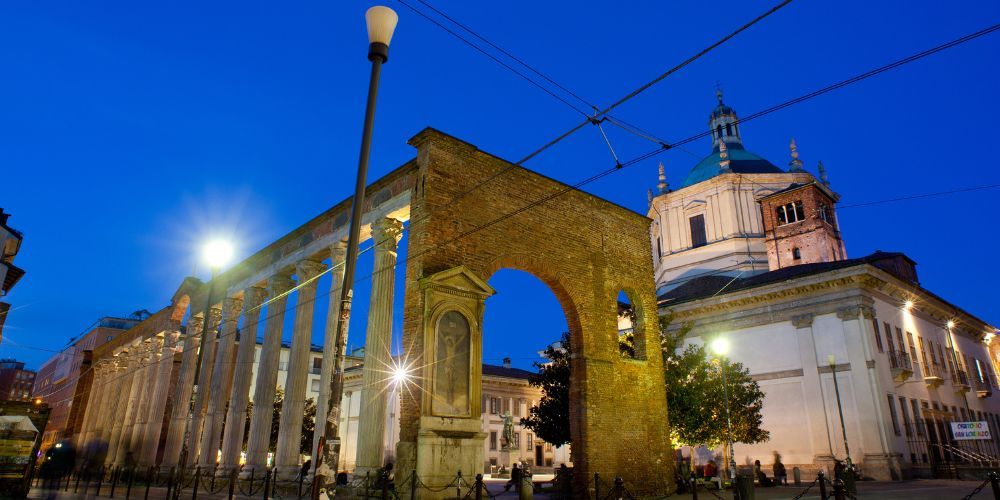
Colonne di San Lorenzo
The Columns of San Lorenzo are one of the most fascinating and enduring symbols of the city of Milan. Located in front of the Basilica of San Lorenzo Maggiore, these sixteen marble Corinthian columns, dating back to the Roman Imperial period, are among the few remaining visible vestiges of ancient Milan.
Their presence, simultaneously imposing and discreet, unites the city's historical memory with its vibrant contemporary life. The columns are not just an archaeological site, but a true meeting point for residents and tourists, a symbol of community and culture. Walking among the columns means touching history firsthand, admiring the elegance of Roman art, and experiencing a meaningful urban space.
They are a bridge between eras, a perfect frame for the daily life that unfolds around them. Between cafés, events, and street art, they represent a pulsating heartbeat in Milan's historic center. The Columns of San Lorenzo are, through and through, a timeless symbol.
Visit Milan with Milan PassThe history of the Colonne di San Lorenzo
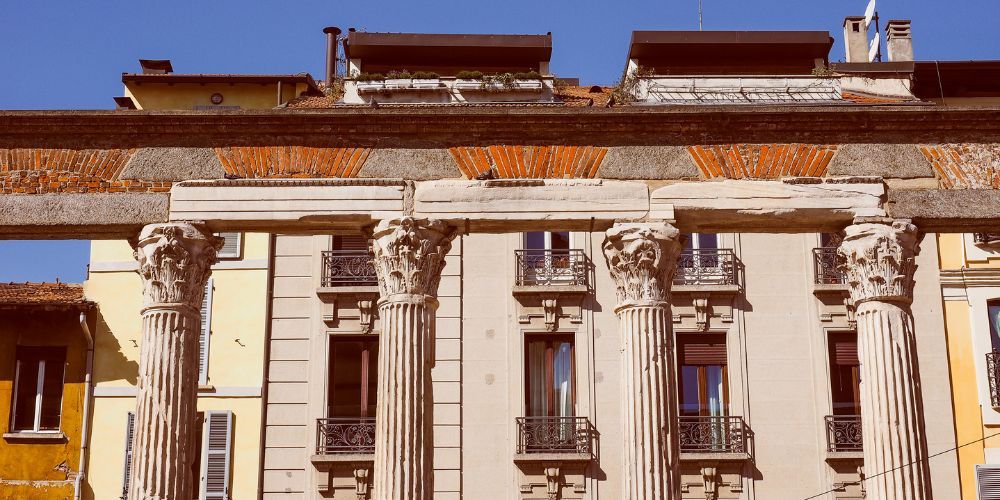
Colonne di San Lorenzo
In the beating heart of Milan, amidst the vestiges of a glorious past and the vibrancy of modern urban life, stand the Columns of San Lorenzo, one of the city's oldest Roman monuments. This extraordinary colonnade, composed of sixteen imposing marble Corinthian columns, represents one of the most significant testimonies of Imperial Milan.
The columns date back to the 2nd or 3rd century AD, during the period of the Roman Empire. Scholars believe they originated from a public building or a pagan temple located elsewhere in the city. In the 4th century, during the Christian expansion of the Empire, the columns were transported and reused to adorn the space in front of the Basilica of San Lorenzo Maggiore, which was under construction at the time. This phenomenon, known as spolia, was very common in antiquity and involved the reuse of architectural elements from older buildings for new constructions, often for symbolic as well as practical reasons.
Today, the Columns of San Lorenzo represent not only a rare example of surviving Roman architecture in Milan, but also a tangible point of contact between the ancient and the modern. Despite having survived wars, urban revolutions, and architectural transformations, these columns remain, a testament to the grandeur of Roman Mediolanum.
How and when to visit the Colonne di San Lorenzo
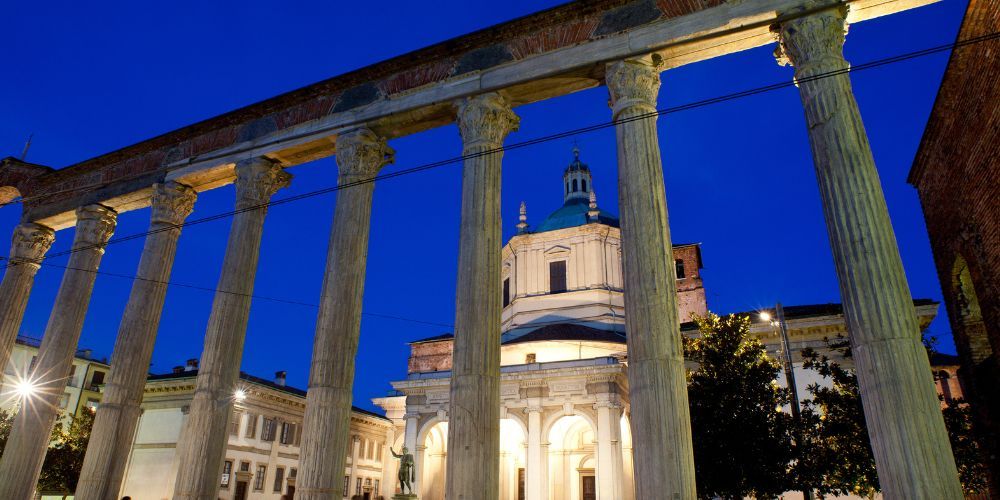
Colonne di San Lorenzo
The Columns of San Lorenzo are located on Corso di Porta Ticinese, in a central and easily accessible area of Milan. Access to the area is completely free, as the columns are outdoors, integrated into the urban fabric. There are no opening hours or admission fees: the columns can be visited at any time of day or night, making them an accessible destination for everyone, in any season.
However, to best appreciate them, it is recommended to visit during daylight hours, when the sunlight highlights the marble hues and architectural details. Sunset also offers a captivating spectacle, with the warm colors of the sky reflecting off the columns, creating a magical atmosphere.
Those seeking a more in-depth experience can take a guided tour of Milan's historic center that includes the columns and the Basilica of San Lorenzo. During these tours, expert guides share not only the architectural history but also the curiosities and legends surrounding this site.
Furthermore, in the evening, the Colonne become the hub of Milanese social life: numerous clubs, bars, and restaurants enliven the area, making it perfect for a more convivial evening visit. The area is excellently served by public transport: the nearest metro stops are Missori (M3) and Sant'Ambrogio (M2), both just a few minutes' walk away.
Colonne di San Lorenzo, a meeting point in the city of Milan
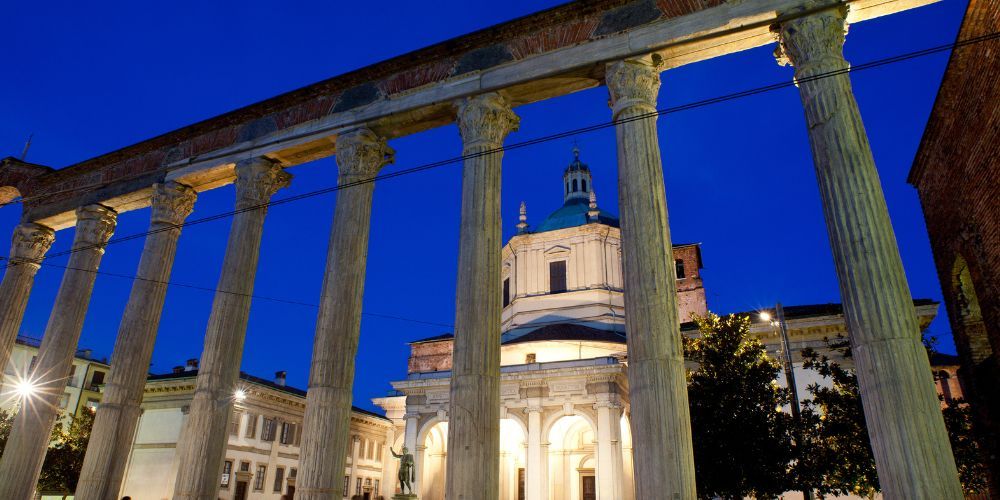
Colonne di San Lorenzo
Beyond their historical and archaeological significance, the Columns of San Lorenzo play a fundamental social and cultural role in the daily lives of Milanese people. For decades, they have been a gathering place of nightlife for young people, artists, students, and tourists. In the evenings, the space in front of the columns transforms into a lively urban lounge, frequented by those who want to spend time in company, listen to music, chat, or simply relax.
Over the years, the area has also become a hub of Milanese street art. The surrounding walls, especially those flanking the Basilica, host graffiti and murals that change over time, forming a sort of open-air art exhibition. This contrast between the antiquity of the columns and the modernity of the urban art gives the place a unique identity.
During the summer, the area comes alive with cultural events, impromptu concerts, and artistic initiatives. Nearby universities also contribute to the liveliness of the place, with students gathering to study or exchange ideas. The columns, therefore, are not just a monument to be admired, but a true symbol of the city as it changes and grows, while maintaining its historical roots.
Basilica di San Lorenzo
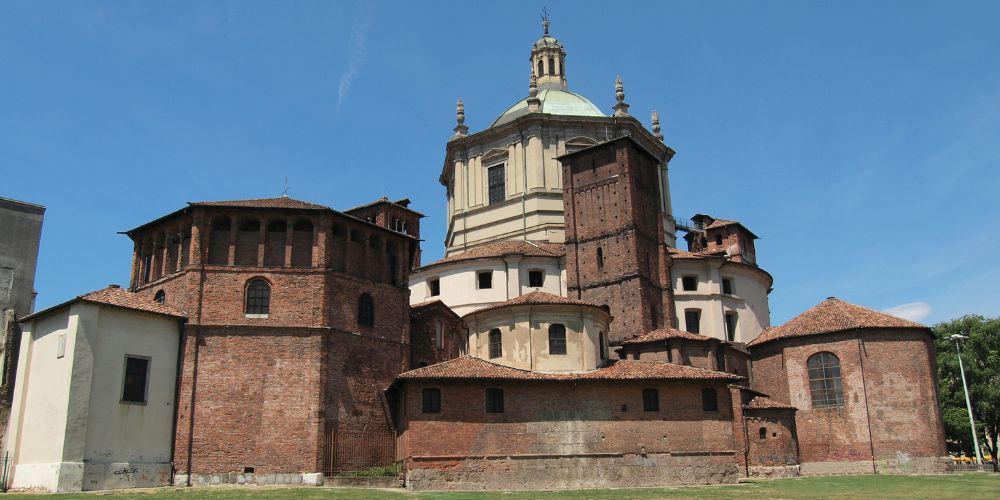
Immediately behind the columns is the Basilica of San Lorenzo Maggiore, one of Milan's oldest and most important churches. Built between the late 4th and early 5th centuries, the basilica was conceived as one of the most impressive religious buildings in Western Christianity. The initial project was likely commissioned by Emperor Valentinian I or Bishop Ambrose, two central figures in Milan's Christian history.
The original basilica had a central plan, inspired by the great imperial basilicas of the East, with an imposing dome and four symmetrical arms. Although it has undergone numerous collapses, restorations, and alterations over the centuries, it still retains a fascinating architectural structure.
One of the most evocative elements is the Chapel of Sant'Aquilino, dating back to the 4th century and decorated with Byzantine mosaics. This chapel is accessible from the side nave of the basilica and represents one of the finest examples of early Christian art in northern Italy.
Outside, the quadriportico connecting the basilica to the columns was once an integral part of the monumental entrance. Today, the entire complex—columns and basilica—constitutes one of Milan's most significant historical and religious sites, blending Roman, early Christian, and medieval elements.
What to visit near the Colonne di San Lorenzo
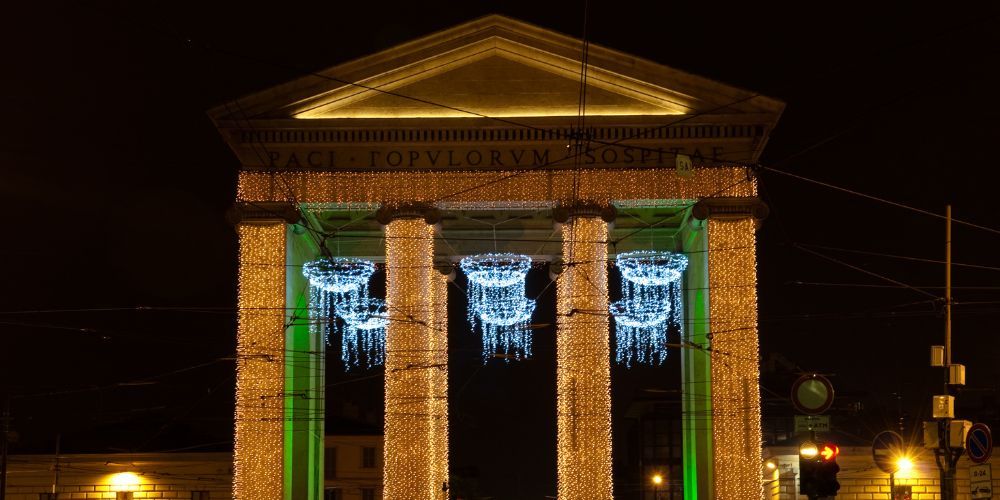
The location of the Columns of San Lorenzo is strategic for those who want to explore Milan's historic center, as they are close to many other cultural and tourist attractions.
Porta Ticinese: Continuing along Corso di Porta Ticinese, you reach the historic Porta Ticinese, one of the ancient city gates, dating back to the Middle Ages and later remodeled in the Neoclassical era. It's an excellent starting point for a stroll along the Navigli.
The Navigli: A few minutes' walk away are the famous Milanese Navigli, the historic canal system now home to bars, restaurants, artisan workshops, and art galleries. The area is perfect for a sunset aperitivo or a romantic stroll.
Diocesan Museum: Located in the nearby Sant'Eustorgio complex, the museum houses sacred art, archaeological finds, and a section dedicated to Milan's Christian history.
Parco delle Basiliche: Just behind the Basilica of San Lorenzo lies a large urban park, perfect for a relaxing break or a picnic under the shade of the trees. The park connects San Lorenzo to the Basilica of Sant'Eustorgio, creating a green corridor between two historic places of worship.
Columns and alternative shopping: Along the surrounding streets, such as Via Torino and Via Caminadella, you'll find vintage shops, independent boutiques, historic bookstores, and innovative venues. It's the perfect neighborhood for those who love discovering the authentic, less touristy side of Milan.
Explore Milan's Navigli and Darsena canals on a boat tour!Why Visiting Colonne di San Lorenzo?
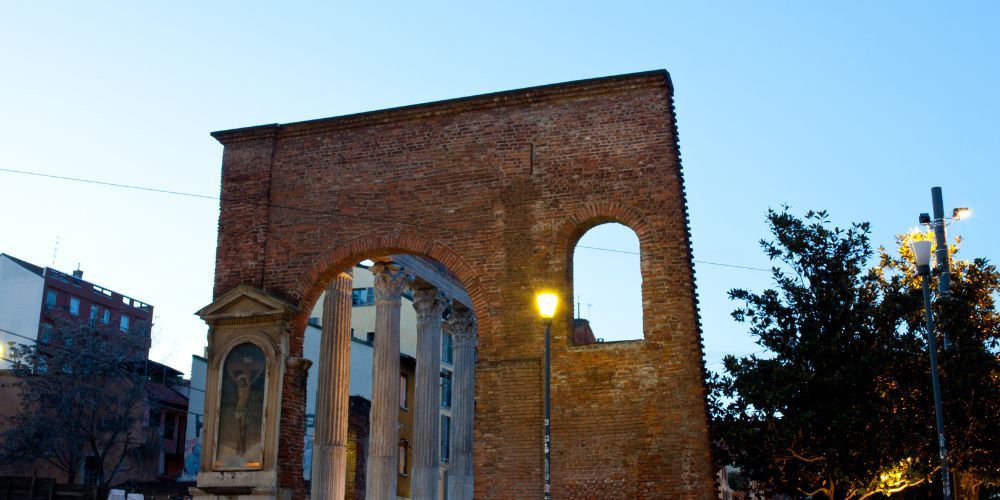
The Colonne di San Lorenzo represent much more than a simple archaeological monument. They are the symbol of a city in constant evolution, capable of preserving its history while keeping pace with the times. They are a meeting point between past and present, between the sacred and the profane, between art and everyday life.
Anyone visiting Milan cannot consider their experience complete without stopping to admire these thousand-year-old columns, touching them, experiencing them, and observing the people who bring them to life every day. They are living proof that beauty lies not only in museums, but also in the places we experience, pass through, and share every day.
Whether you are a history buff, an architecture enthusiast, a curious tourist, or a city dweller seeking everyday beauty, the Columns of San Lorenzo will speak to you in the universal language of stone, memory, and community.
About the author
Written on 07/08/2025

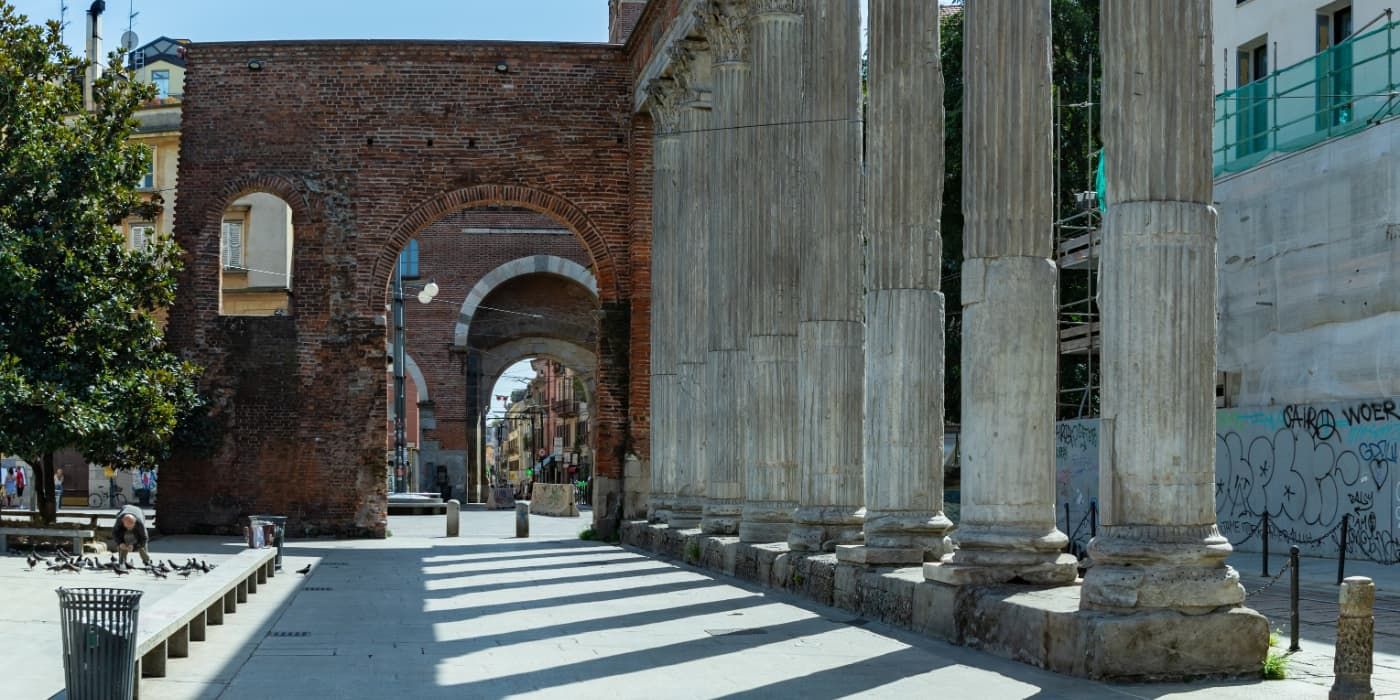

Maria Luisa Ancona
Colonne di San Lorenzo in Milan are a historic symbol and a lively meeting place for young people in the heart of the Lombard city.